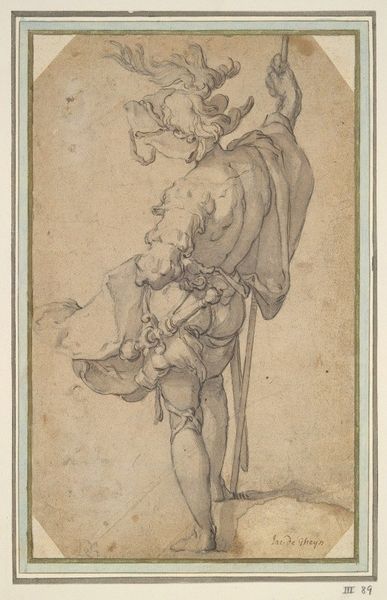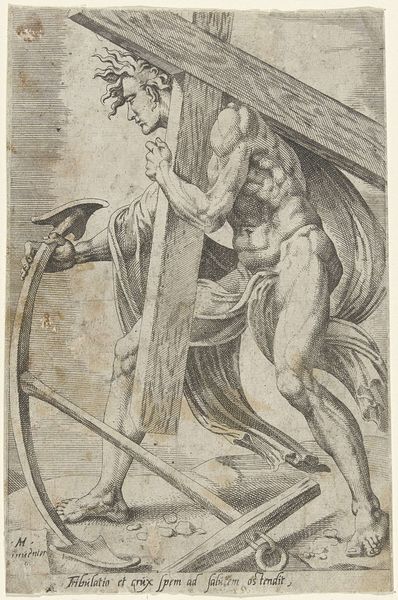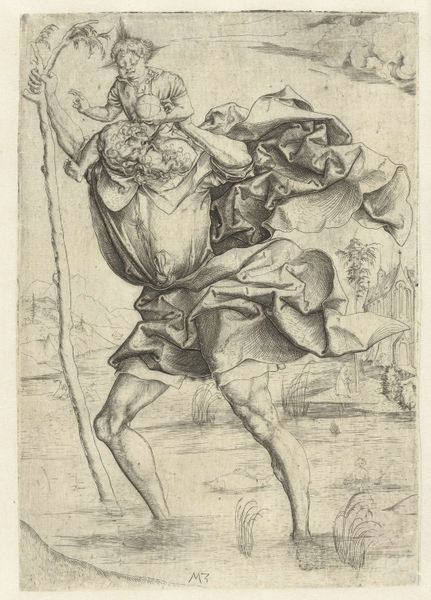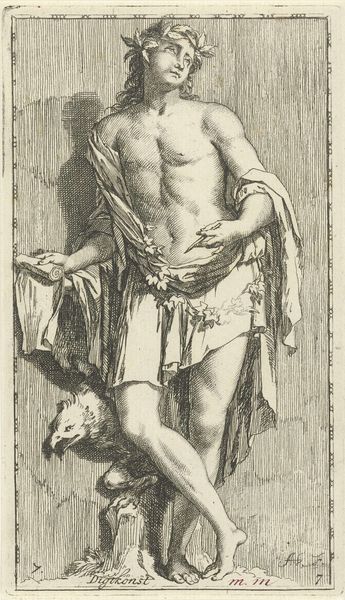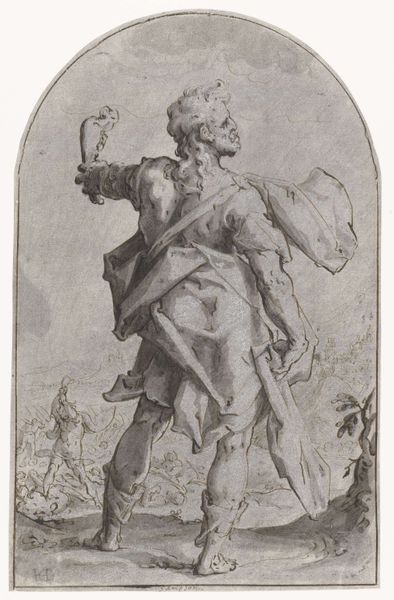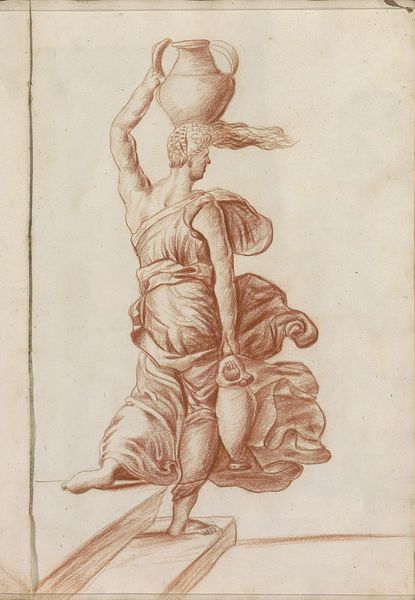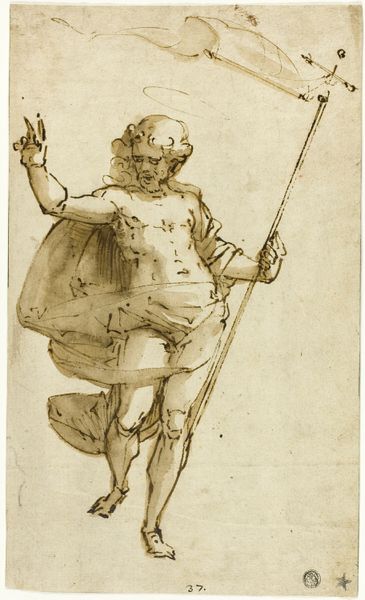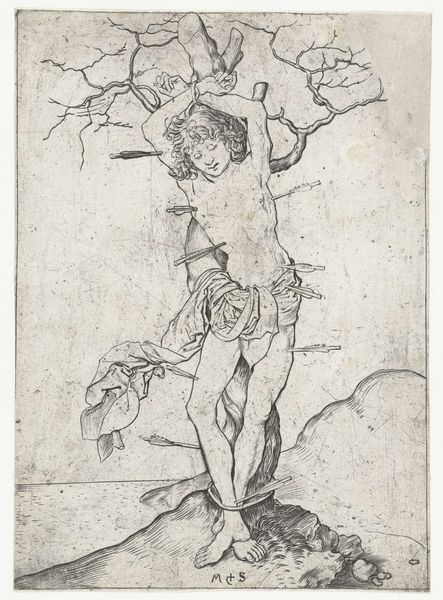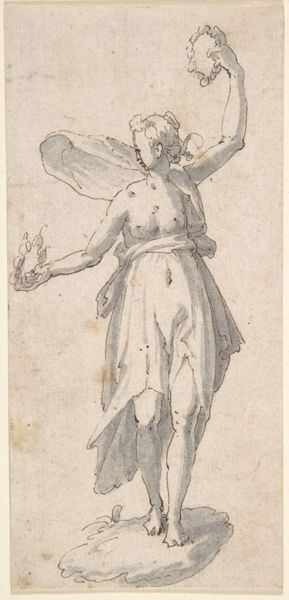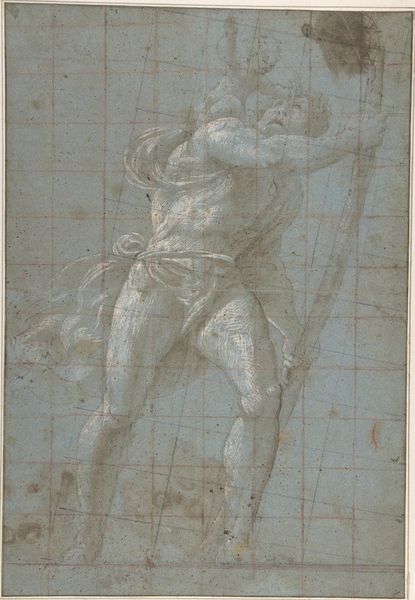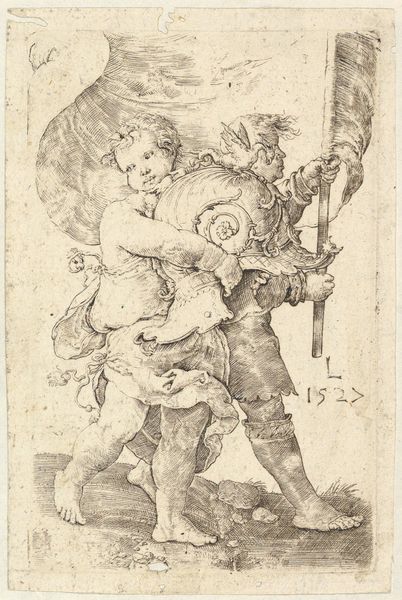
drawing, ink
#
drawing
#
imaginative character sketch
#
quirky sketch
#
mannerism
#
cartoon sketch
#
figuration
#
11_renaissance
#
personal sketchbook
#
ink
#
character sketch
#
sketchbook drawing
#
watercolour illustration
#
storyboard and sketchbook work
#
cartoon carciture
#
sketchbook art
Dimensions: height 181 mm, width 152 mm
Copyright: Rijks Museum: Open Domain
Editor: So, this is "Standing Cupid, with Bow" by Alessandro Casolani, dating roughly between 1562 and 1610. It’s an ink and wash drawing, and what strikes me immediately is how preliminary it feels – a quick sketch with so much character. How do you interpret this work, especially considering its time period? Curator: This drawing speaks volumes about the artistic and social context of the late Renaissance, especially as it teeters towards Mannerism. Casolani, though lesser-known than some, reflects the period’s interest in idealized form while simultaneously playing with distortion and expressive line work. The preliminary nature, as you say, gives us insight into the artistic process, something that became increasingly valued. How do you see the figure relating to the ideal of beauty in the 16th century? Editor: Well, he's clearly meant to be Cupid, so you'd expect idealized beauty, but there's a definite… awkwardness to his pose and proportions. Is this almost a playful critique of those ideals, or just an artist working things out? Curator: That’s precisely where the tension lies, and it's fertile ground for discussion. Mannerism, as a style, often exaggerates and distorts for effect, challenging the High Renaissance’s emphasis on balance and harmony. This Cupid feels less about perfect beauty and more about conveying a sense of dynamic energy, even mischievousness. Think about the role of Cupid imagery at the time—what purposes did it serve, and how might Casolani be engaging with or subverting those expectations? Editor: That’s fascinating! I was focused on the technique, but placing him within that Mannerist and socio-political context really deepens my understanding. Curator: Exactly. Considering how art was commissioned, displayed, and perceived allows us to look beyond the surface and understand the active role art played in shaping cultural values. We should both think about how later artists depicted this well known mythological character.
Comments
No comments
Be the first to comment and join the conversation on the ultimate creative platform.
